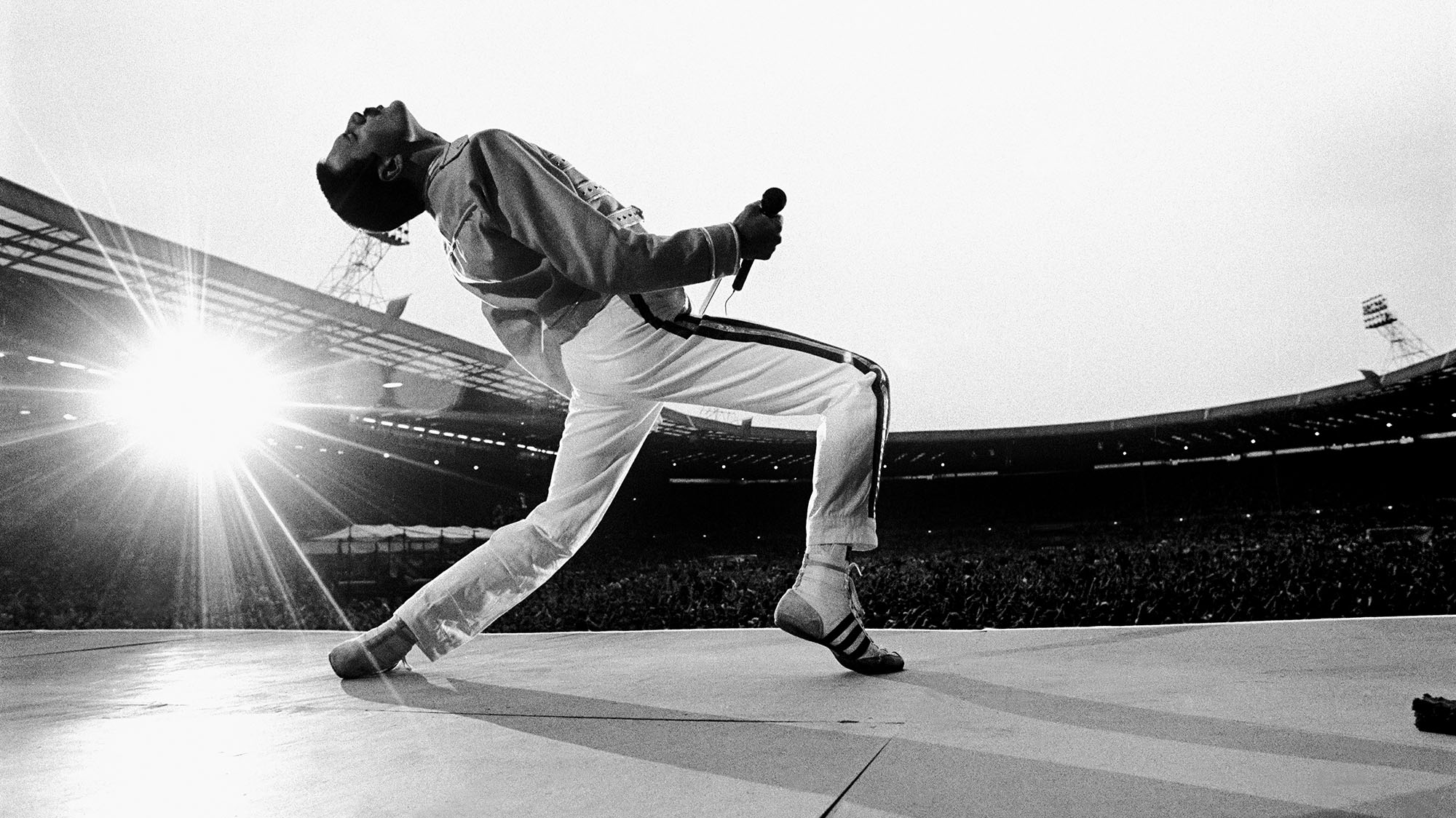Rock photography is dead. Blame publicists. Blame managers. Blame overzealous, predatory photographers. Blame all the people who made access to musicians near impossible. As the newest book by legendary rock photographer Neal Preston proves, when it comes to the best in music photography, access is everything.
Exhausted and Exhilarated, (Reel Art Press, 2017) is filled with never-before-seen photos of unguarded backstage moments, shots from behind amps on stage and in limos and hotel rooms, of all the biggest musicians of the 1970s and ’80s. Preston captured some of the most notorious rock tours of all time: Led Zeppelin, at their absolute peak; The Who in their full Keith Moon raucousness; Frampton filling enormous stadiums.
Photos like these just don’t happen much anymore, at least not without clearance from a phalanx of publicists and managers and lawyers and only after signing away all rights to the photos. Not that Preston didn’t have to get through Led Zeppelin’s notoriously gruff manager Peter Grant before getting the greenlight to shoot them, but the photos in his book have a loose familiarity about them that feels absent from a lot of music photography today.
Preston didn’t just focus on the candid backstage moments. Those just happen to be among my favorites. His live shots are on fire, putting you right there, front and center, or often right on stage with the musician. You can feel the sweat. And he captures excellent pensive moments in the studio, like Bruce Springsteen standing as if he’s studying the microphone before him.
Preston, now 65 and living in Los Angeles, earned his reputation by being a well-rounded photographer, able to bring out the best—or at least capture something real—in the musicians he photographed. The portraits convey a connection that can be hard to coax out of famous people who are so used to being documented.
The list of bands covered in the book is far too long to even dip into. Basically, if they were popular between the very late ’60s into the early ’90s, they’re likely in here. Sprinkled throughout, Preston shares vignettes and bits of wisdom about touring as a rock photographer, including this vital ego-checking nugget: “You are not a member of the band.” He goes on, “Almost all musicians, (other than the obvious key ones) are expendable and photographers are no different.” It’s as much fun reading as it is flipping through this heavy 336-page volume.
Here’s a brief taste.
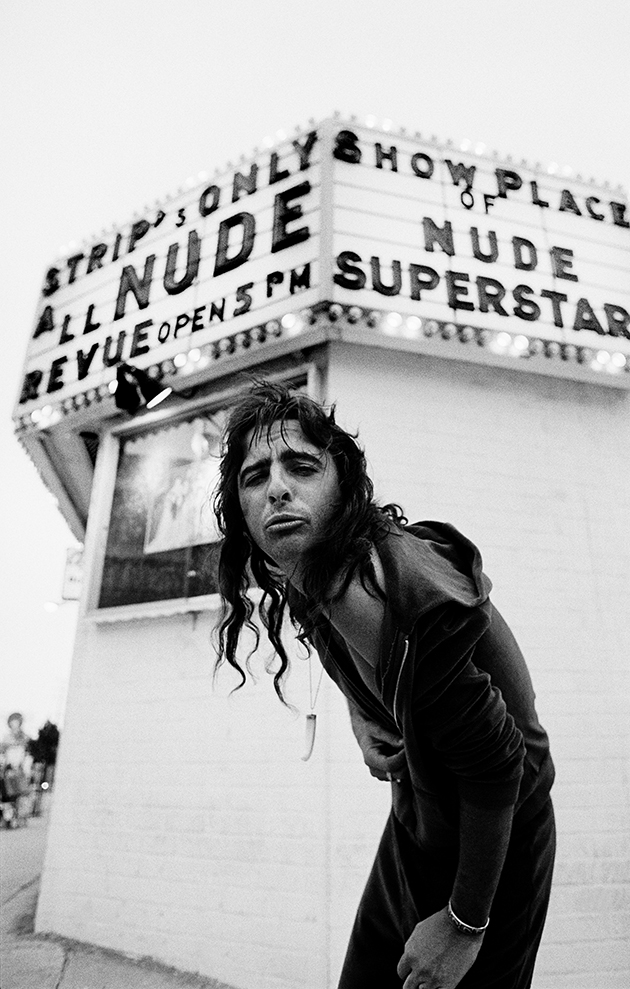
I had been given a magazine assignment to shoot Alice Cooper around Hollywood for a sort of photographic “guided tour.” This was at the point in his career when Alice had started hanging around with people like Groucho Marx, playing golf all day and appearing on TV game shows like
Hollywood Squares
. It was all about Alice playing against “type”…so I went along with the joke. We shot all over Hollywood Boulevard, went to all the cheesy gift shops and bought some maps to stars homes…just like we were tourists fresh off the bus from Iowa. One of the last shots we did that day was in front of a run-down strip bar, which was a pretty normal building to see in Hollywood in those days. So much for the glamour that was Hollywood.
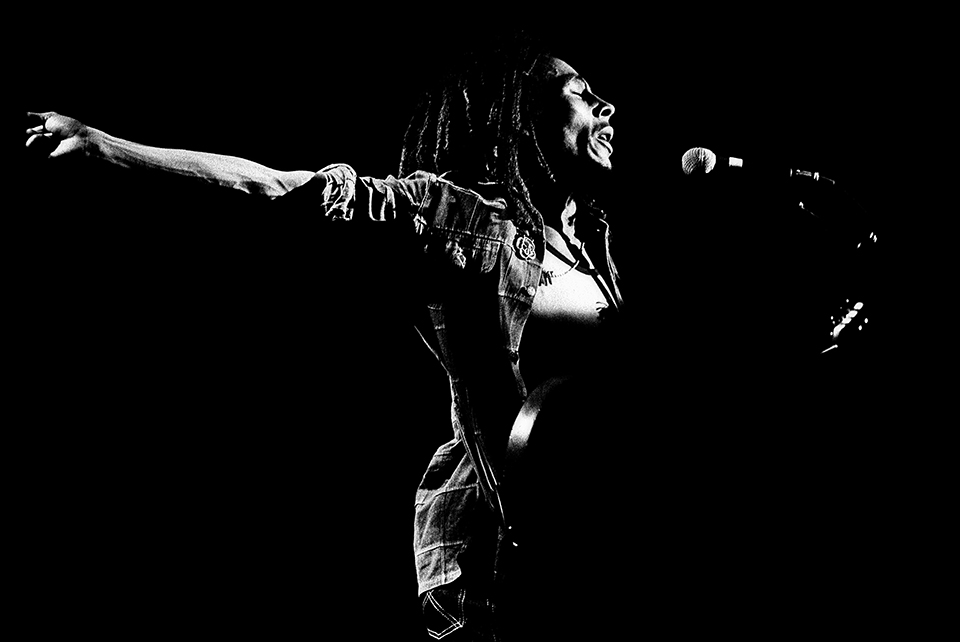
I found this shot on a roll of film I always considered a throwaway. Bob Marley played the Santa Monica Civic and I believe he opened for The Clash (although I may be wrong). I was never a big reggae fan and I wasn’t there to shoot Bob, but I shot a couple of rolls of him just to pass the time, since I was on the stage anyway. It turned out to be one of those little hidden gems that you stumble over once in a great while when you go back and look at proof sheets that you haven’t seen in years. It’s another reminder that you should never ever toss a roll of film away.
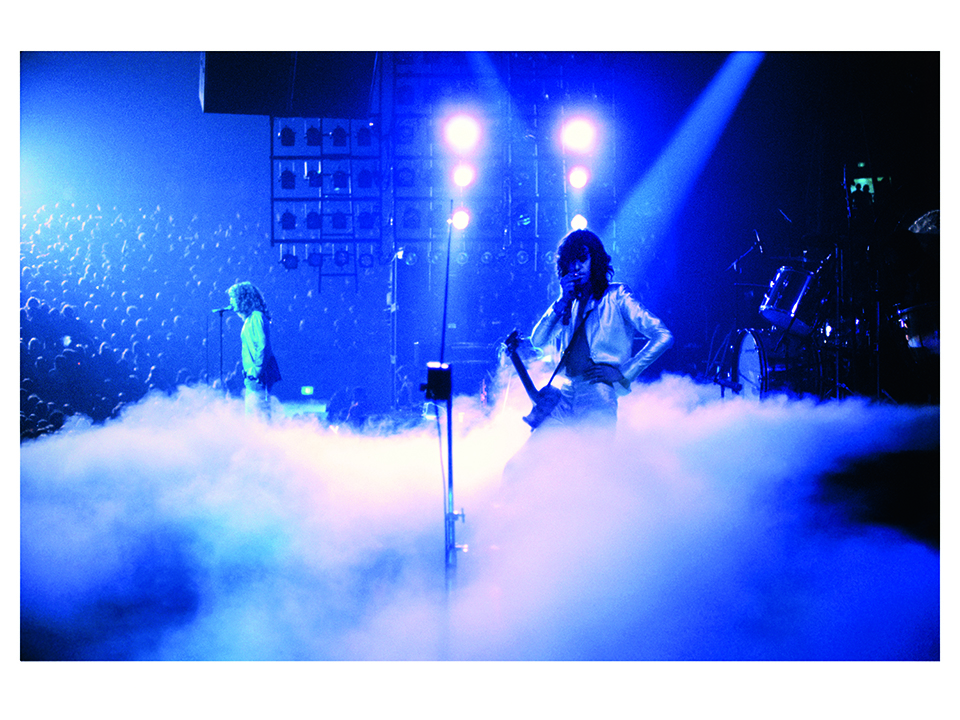
This is one of my most favorite shots that I’ve ever taken. It was shot during the song “No Quarter,” which begins with John Paul Jones’ keyboard intro followed by Robert’s vocal. Jimmy was standing by his theremin waiting to come in with his guitar part and I was sort of hiding in back of Peter Grant (which was usually a very good place to park myself and remain invisible). Jimmy suddenly locked eyes with me and I shot this picture; he then walked right up to me a few seconds later. He asked me if I had noticed the tour doctor in the front row, who was surrounded by about five hot blondes. I told him, “Yes, that’s Dr. Larry alright…” He was clearly not happy about this..so he walked back out to center stage and proceeded to tear off an absolutely blistering guitar solo, glaring at Dr. Larry the entire time. To me, this photograph FEELS what it was like to be on stage with Led Zeppelin.
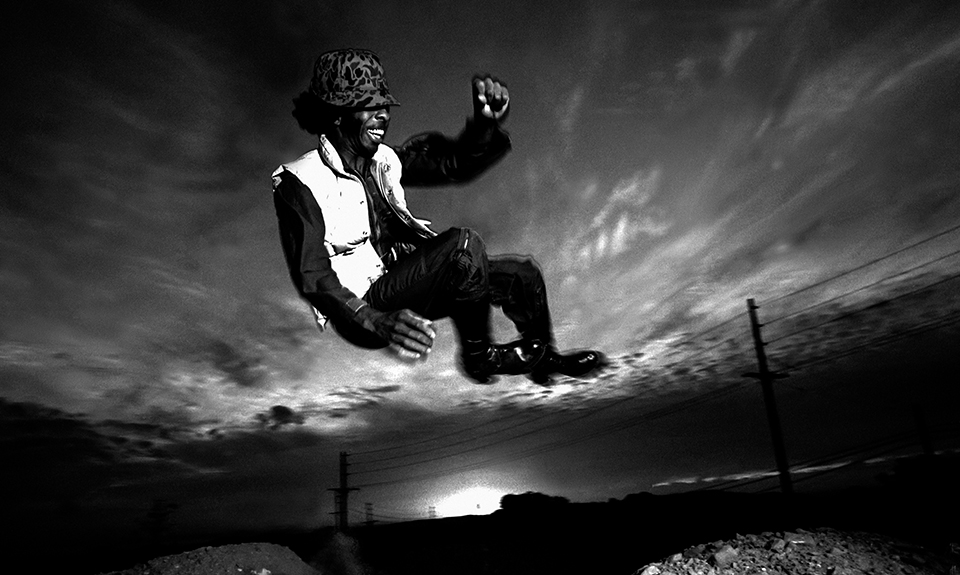
Sly Stone.
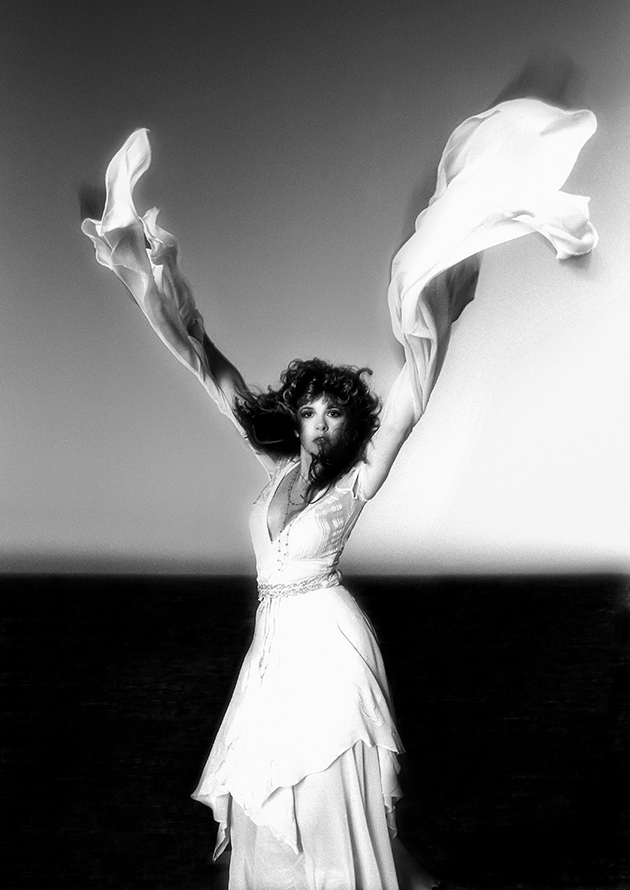
This shot is from my first one-on-one session with Stevie Nicks in 1981. Stevie was living in a condo on the 6th floor of a building in Venice Beach, and after an all-day shoot we decided to do one last picture on her rooftop as the sun went down. As soon as we started shooting the wind really began to pick up to the point where I was worried that she’d be blown over the side of the building. I wasn’t about to let a little wind ruin a potentially great photo, so there was only one thing to do: As a safety precaution, I had an assistant lay on his stomach out of frame while he held on to her right boot. I said, “Whatever you do, do NOT let go of her!”
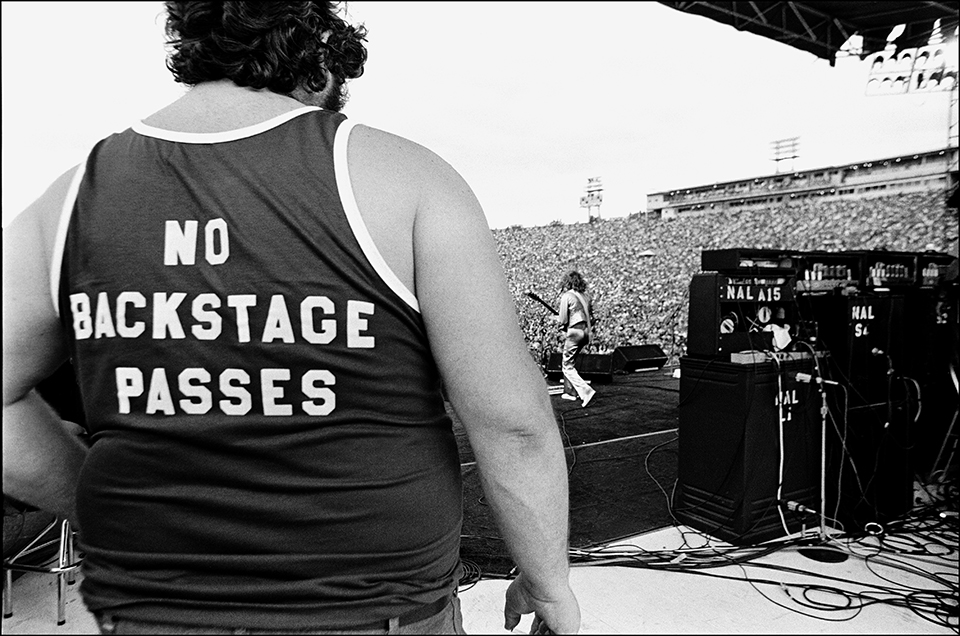
This was shot at a Peter Frampton concert in Florida at the height of Frampton’s popularity in the mid-70’s. Promoters would usually go to the local college and always hire the biggest, most massive dudes to do security on stage and backstage. The fatter the better. These guys were never hired for their smarts, or their ability to think fast on their feet. It was all about intimidation, with the benefit of only having to pay these guys minimum wage and a case of beer. I probably shot this picture because the guy refused to move out of my way.
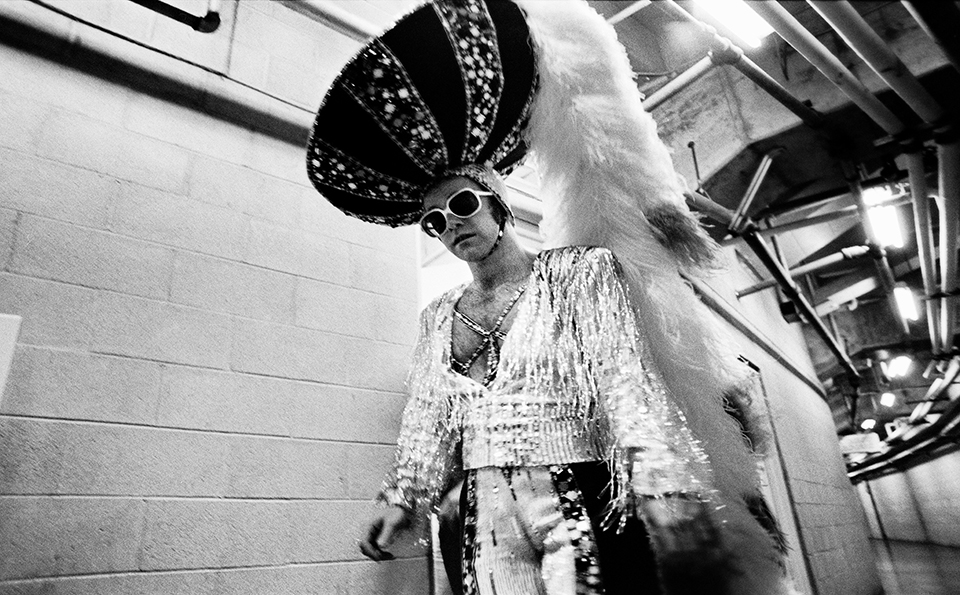
This shot is a perfect example of what I like to call a “happy accident.” I happened to catch Elton John just as he came out of his dressing room at the Forum in LA in 1974. I literally shot this from the hip with a 24mm lens. It looks like he’s alone but there were plenty of other people around; luckily I got the framing just right.
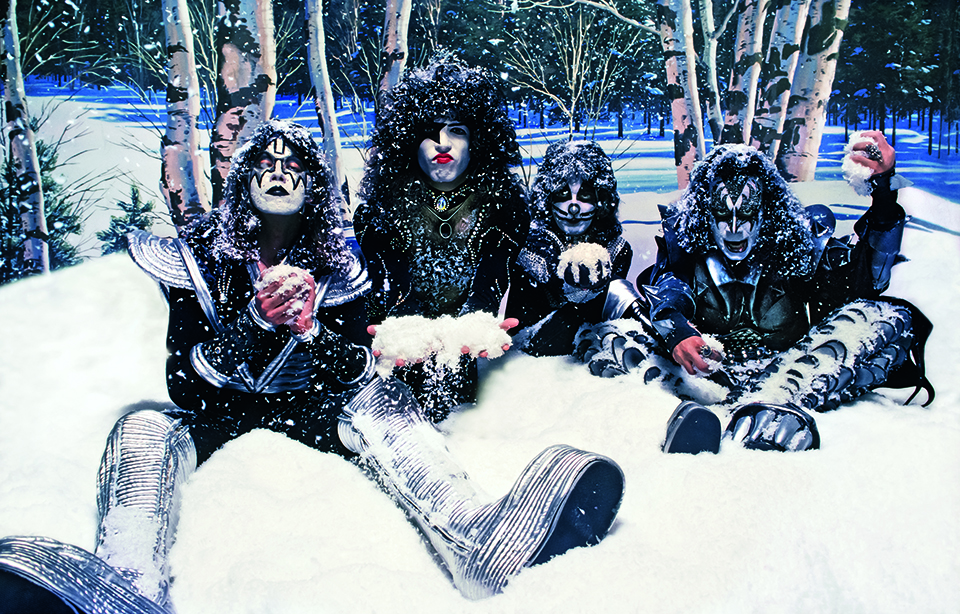
This shot of Kiss was done for a holiday cover of Creem Magazine. I rented the cheesiest winter backdrop I could find and bought lots and lots of fake polyurethane snow- the same stuff that the movie studios used. We spread the fake snow all over the photo studio at A&M Records and it really started to look and feel like winter, even though it was September in Los Angeles. I had a couple of assistants hanging in the rafters with bags of the stuff so I could have flurries any time I wanted. Unfortunately, Ace Frehley had started his holiday partying a few months early and in the middle of the shoot he passed out face down in the snow, which unfortunately was highly toxic. He took a big whiff of the stuff and started coughing up blood—and that was the end of the shoot. The snow also got into the studio’s ventilation system and for six months every time the air conditioner was turned on some of the fake snow would blow out. I was not-so-politely asked to never set foot in that studio again.
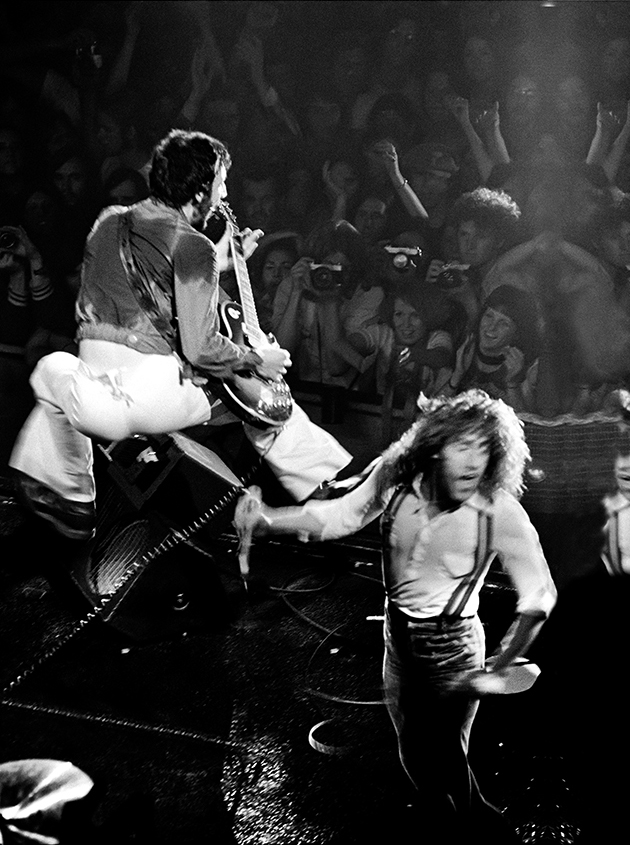
The Who, San Francisco, 1976.
